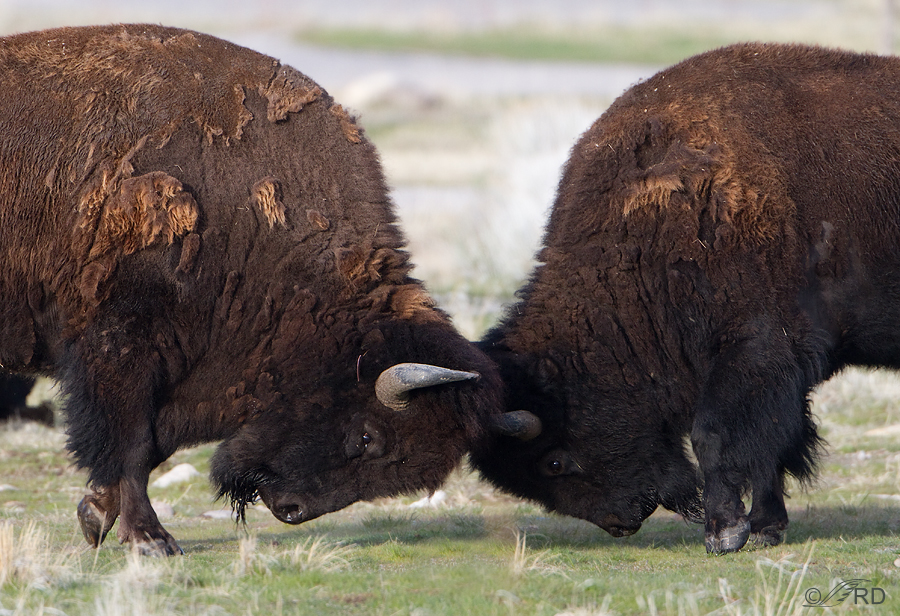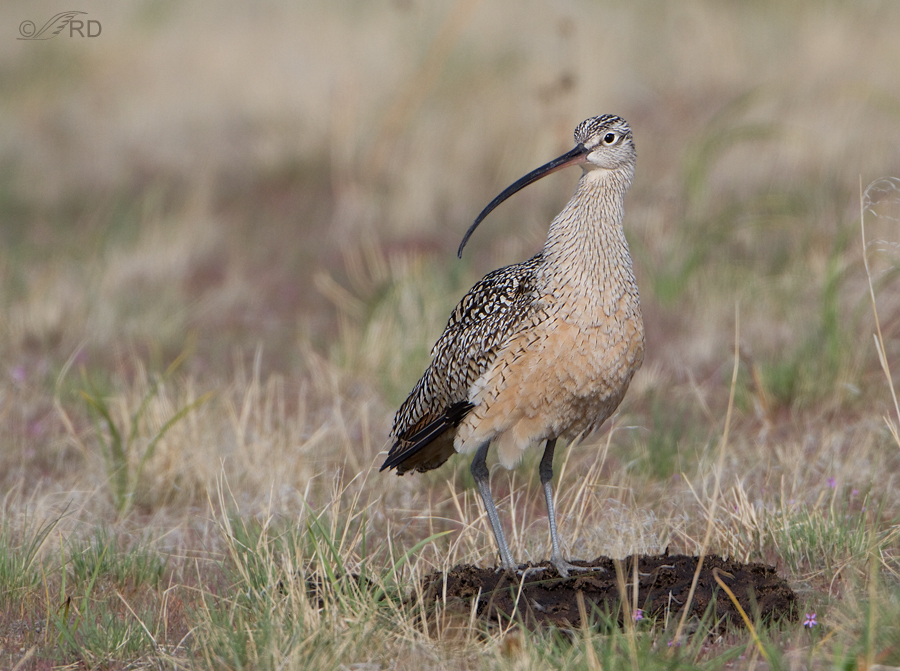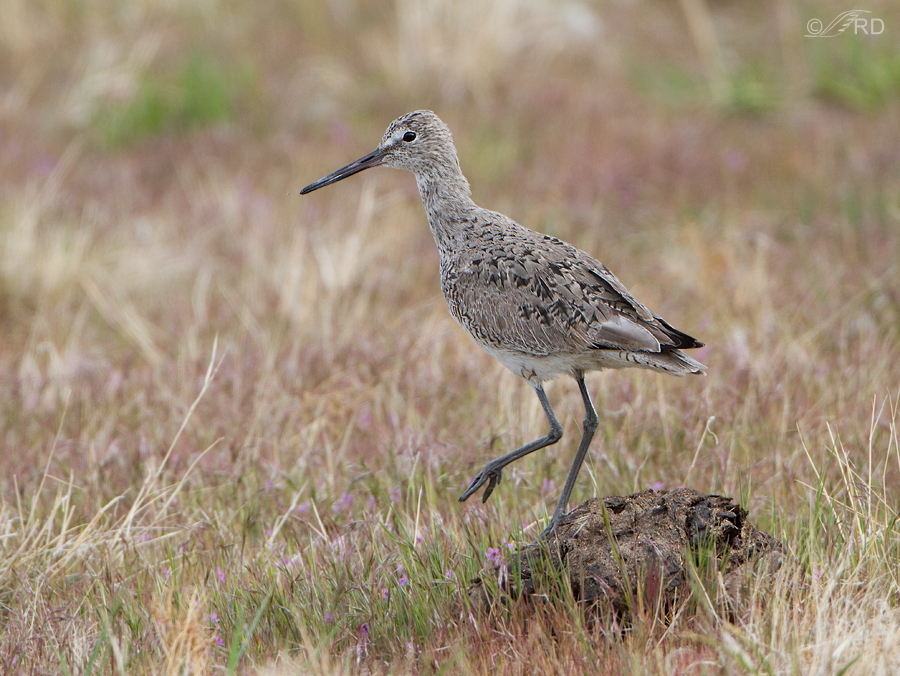The American Bison is a relative newcomer to North America, having migrated from Eurasia over the Bering Straight about 10,000 years ago. As is common knowledge they once roamed in massive herds across most of the continent until commercial hunting and slaughter reduced their numbers to a few hundred by the end of the 19th century.
1/500, f/6.3, ISO 500, 500 f/4, 1.4 tc
Today a herd of approximately 500 animals roams free on Antelope Island and that many large animals produce a lot of poop – commonly referred to as “buffalo chips”. Those chips are all over the island – like small dark islands in a sea of prairie grasses and tiny flowers and they’re tempting perches for a variety of bird species like Horned Larks and Meadowlarks. But this past week I was able to catch some larger birds using them as perches.
1/2000, f/6.3, ISO 500, 500 f/4, 1.4 tc
In the spring some of the shorebirds and wading birds come up from the shore of the Great Salt Lake to higher ground on the island for their breeding activities – Long-billed Curlews among them. It seems that the added height of only a couple of inches provided by the chip is enough to significantly improve their view of the landscape for potential predators and also to help them keep an eye on other curlews in the area – there’s a lot of fighting and mating activities going on this time of year.
To some viewers such a perch may have no aesthetic draw but I’m always struck by the timelessness of such a scene. For at least a hundred centuries birds have been using these convenient and transient perches on the North American plains and for me there’s a huge appeal for the naturalness of it all – the chip, the bird’s choice of perch, the flush of green from the nutrients of the chip, the insects near and on the chip that attract some birds – I like it all.
I’m also somewhat a student of the “old west” and I like to ponder the past where Native Americans, trappers, pioneers, cowboys and even my own ancestors who helped to settle Utah back in 1850 would have watched birds perched on buffalo chips – to them at times it must have been a common occurrence but today I’m betting it’s something that relatively few Americans have ever witnessed.
Yes, I’m a bit of a romantic when it comes to the old west but I just can’t help myself…
1/800, f/6.3, ISO 500, 500 f/4, 1.4 tc
Willets also come up to higher elevations on the island for their mating activities and they’ll also perch on the buffalo chips. Both species (Willets and curlews) will most often perch on larger rocks if they’re available but on many parts of the island they’re not so the chips are apparently the next best thing.
Ron





Hi Ron, I just got back from a nest survey out around the Cedar Mountains. Usually it’s all about looking up, but a fair amount of this trip was spent looking low for Burrowing Owls. Can’t begin to describe how many times I got fooled by vertical cow chips. All shapes, all sizes. Lots of perched Horned and Meadow Larks as you mentioned. Finally found a couple of BOs, but only after the sun went down and they started calling.
Mike – when we’re looking for curlews and Willets up on the flats we get fooled constantly by the chips – especially by the older ones that aren’t quite so dark.
Wonderful shots!
So many birds are opportunists. Here, many species will perch on or hover near cow patties. The height advantage may seem insignificant to us, but if you look at it from the perspective of something so much smaller than us it suddenly makes sense.
More sense that the behaviour of my brothers who would put firecrackers into freshish cow manure and scamper back to see the show. And if you could shower the unsuspecting, so much the better.
Before I get sidetracked any further, thank you for these shots. I particularly liked the feathering on the Curlew.
Thanks Elephant’s Child. Must admit, your brothers and I likely had a lot in common when we were young…